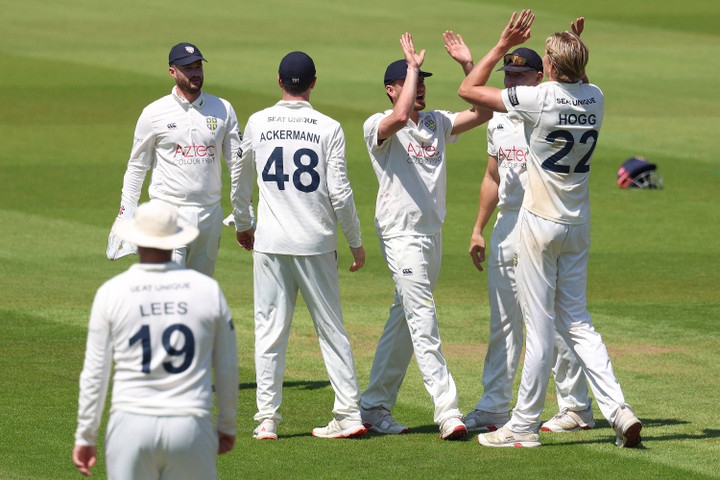- The foundation of weight classes
- The lighter divisions - built for speed
- The middle ground: the balance between power and speed
- The glamour divisions: where stars are born
- The power divisions: knockout potential
- The heavyweight division: boxing's premier attraction
- Betting strategies across weight classes
- Conclusion
- Responsible gambling with FIRST
Boxing weight classes explained: from flyweight to heavyweight betting strategies
Boxing has captivated audiences for centuries, with fighters showcasing their skills across different weight divisions. Understanding these weight classes is crucial for both casual viewers and serious bettors looking to make informed decisions.
Each division brings unique characteristics, fighting styles, and betting opportunities that can significantly impact your wagering strategy.
So if you’ve always wanted to speak the boxing lingo like a pro – and understand each category to use it to your advantage on one of the best boxing betting sites – look no further.
The foundation of weight classes
Professional boxing organises fighters into weight classes to ensure fair competition and fighter safety. The major sanctioning bodies – WBC, WBA, IBF, and WBO – recognise 17 professional weight divisions, each with specific weight limits measured in pounds.
These divisions prevent significant size mismatches that could lead to dangerous outcomes while creating more competitive and entertaining fights.
Weight classes also influence fighting styles dramatically. Smaller fighters typically rely on speed, technical skill, and volume punching, while larger fighters often possess knockout power and longer reach.
This distinction becomes essential when evaluating betting opportunities, as different weight classes favour different fighting approaches.
The lighter divisions - built for speed
Minimumweight (105 lbs) - sometimes referred to as 'mini flyweight' - represents the smallest professional division, featuring fighters who compensate for their size with incredible speed and technical precision. These bouts often showcase pure boxing fundamentals, with fighters rarely possessing one-punch knockout power.
Betting on minimumweight fights requires understanding technical boxing skills and endurance factors.
Light Flyweight (108 lbs) and Flyweight (112 lbs) continue the pattern of speed-focused competition. Flyweight has produced legendary champions like Jimmy Wilde and more recently, fighters like Roman Gonzalez.
These divisions offer excellent betting value for those who understand technical boxing, as casual bettors often overlook the lighter weight classes.
Super Flyweight (115 lbs) and Bantamweight (118 lbs) begin to show more knockout potential while maintaining the technical excellence of lighter divisions. Bantamweight has a rich history with stars like Manny Pacquiao starting his career here. The increased power makes these fights more unpredictable from a betting perspective.
Keep up to date with our boxing tips to be ready for the big fights
The middle ground: the balance between power and speed
Super Bantamweight (122 lbs) through Lightweight (135 lbs) represent the sweet spot where fighters combine technical skill with legitimate knockout power. These divisions include Featherweight (126 lbs), Super Featherweight (130 lbs), and Lightweight, which many consider the most talent-rich division in boxing.
The Lightweight category has produced icons like Roberto Duran, Julio Cesar Chavez, and currently features stars like Gervonta Davis and Ryan Garcia.
The division offers excellent betting opportunities because the balance of power and speed creates unpredictable outcomes. Fighters can win through technical dominance, knockout power, or superior conditioning – so there is something there for everyone.
Super Lightweight (140 lbs) marks the beginning of the welterweight area, where power becomes more prominent. This division often features fighters moving up from lightweight or down from welterweight, creating interesting stylistic matchups for betting analysis.
The glamour divisions: where stars are born
Welterweight (147 lbs) stands as boxing's most prestigious division, combining speed, power, and technical skill. Legends like Sugar Ray Robinson, Floyd Mayweather Jr., and Manny Pacquiao have made their marks here.
The division attracts the best athletes and generates the most betting interest due to its perfect balance of attributes.
From a betting perspective, welterweight fights require comprehensive analysis. Fighters possess enough power to end fights early but maintain sufficient speed and skill to outbox opponents over 12 rounds.
The division's depth means upset potential exists in virtually every significant matchup.
Super Welterweight (154 lbs) bridges the gap between welterweight's speed and middleweight's power. Fighters like Canelo Alvarez have used this division as a launching pad for multi-division success.
The weight class offers unique betting opportunities as fighters often campaign across multiple divisions and find success when they move up (or indeed down) a step.
Learn: How to bet on boxing online
The power divisions: knockout potential
Middleweight (160 lbs) represents the beginning of boxing's power divisions, where knockouts become more common and betting odds can shift dramatically based on a fighter's punching power.
Legendary middleweights like Marvin Hagler and more recently, Gennady Golovkin, have demonstrated the division's explosive potential.
Super Middleweight (168 lbs) and Light Heavyweight (175 lbs) continue the trend toward power-based fighting. These divisions often feature fighters with devastating knockout ability, making them attractive for betting on early stoppages.
However, the increased power also means fights can swing momentum quickly, requiring careful analysis of chin durability and recovery ability.
Light heavyweight has produced some of boxing's most exciting fighters, including Archie Moore and more recently, Dmitry Bivol. The division offers excellent betting value for those who understand the balance between power and boxing skill.
The heavyweight division: boxing's premier attraction
Cruiserweight (200 lbs) serves as the final stepping stone before heavyweight, often featuring former heavyweights cutting weight or smaller fighters looking to gain power. The division requires unique betting analysis as fighters may struggle with weight management or power adaptation.
Notable examples here include Jai Opetaia and Gilberto "Zurdo" Ramirez (48-1) who is the WBO cruiserweight champion, having unified titles and recently defended against Yuniel Dorticos in June 2025
Cruiserweight betting requires analysing two distinct fighter types: former heavyweights cutting weight who may struggle with stamina and weight management but bring superior power and experience, and smaller fighters moving up who gain knockout ability but face questions about handling increased size and strength.
Key betting factors include weight cutting history, power adaptation patterns, and stark physical disparities within the 200-pound limit that create stylistic advantages often undervalued by oddsmakers.
The division's relative lack of depth and lower profile compared to popular weight classes can create betting value, as lines may be softer due to less sharp money and oddsmakers relying more on name recognition than cruiserweight-specific performance factors.
Heavyweight (unlimited) remains boxing's most prestigious and betting-popular division. Without weight restrictions, heavyweights can range from 200 pounds to well over 250 pounds, creating fascinating stylistic matchups.
The division's knockout potential makes it attractive for casual bettors, but successful wagering requires understanding conditioning, mobility, and chin durability.
Current heavyweight stars like Tyson Fury and Anthony Joshua demonstrate the division's mainstream appeal and massive purses, but betting success in heavyweight requires more nuanced analysis than other divisions due to the unique challenges facing elite fighters. And in clashes like Oleksandr Usyk and Daniel Dubois' rematch, the stakes are about as high as they can be.
Ring rust becomes particularly problematic when top heavyweights take extended layoffs between mega-fights, often lasting 8-12 months or more, which can significantly impact timing, conditioning, and mental sharpness in ways that don't affect more active fighters in lighter divisions.
Motivation levels also tend to fluctuate dramatically among established heavyweight champions who've already achieved financial security and legacy goals, making it crucial to assess whether fighters are truly hungry for victory or simply fulfilling contractual obligations.
Additionally, the heavyweight division's thin talent pool means elite fighters often face opponents with vastly different skill levels and styles than their previous competition, creating preparation challenges that can lead to unexpected upsets when a motivated underdog faces a complacent favourite who hasn't properly adjusted their training camp strategy.
You might like: 13 boxing betting facts you won't believe
Betting strategies across weight classes
Successful boxing betting requires tailoring strategies to specific weight classes. Lighter divisions favour technical analysis and understanding of conditioning, while heavier divisions require evaluating knockout power and chin durability.
Middle-weight divisions offer the most balanced betting opportunities but require comprehensive analysis of multiple factors.
Understanding weight class characteristics helps identify value betting opportunities. Casual bettors often overlook technical skills in favour of power, creating value in lighter divisions. Conversely, they may overvalue power in heavier divisions without considering technical ability.
Conclusion
Boxing's weight class system creates diverse betting opportunities across 17 professional divisions. From the technical artistry of minimum weight to the raw power of heavyweight, each division offers unique characteristics that smart bettors can exploit.
Success requires understanding how weight influences fighting styles, outcome probabilities, and betting value.
By recognising these patterns, bettors can make more informed decisions and find profitable opportunities across boxing's entire weight spectrum – whilst at the same time, enjoying the entertainment and pageantry of the ‘sweet science”.
Responsible gambling with FIRST
You must be 18+ to gamble. Gambling is a form of entertainment, not a way to make money. Our tips and advice help you enjoy gambling, but there is always a chance a bet or casino game can lose.
Never bet more than you can afford to lose. Stop betting if you are angry, emotional or under the influence of alcohol.
Warning signs of problem gambling: chasing losses, betting money needed for bills, or feeling unable to stop.
Need help? Visit our responsible sports betting page or our responsible casino gambling page, or contact the support organisations listed below if you're struggling to control your gambling:






 How to bet on cricket - tips, strategies and what to avoid
How to bet on cricket - tips, strategies and what to avoid
 Ante post football betting guide, strategy and World Cup 2026 odds
Ante post football betting guide, strategy and World Cup 2026 odds
 A comprehensive guide explaining what a trixie bet is
A comprehensive guide explaining what a trixie bet is
